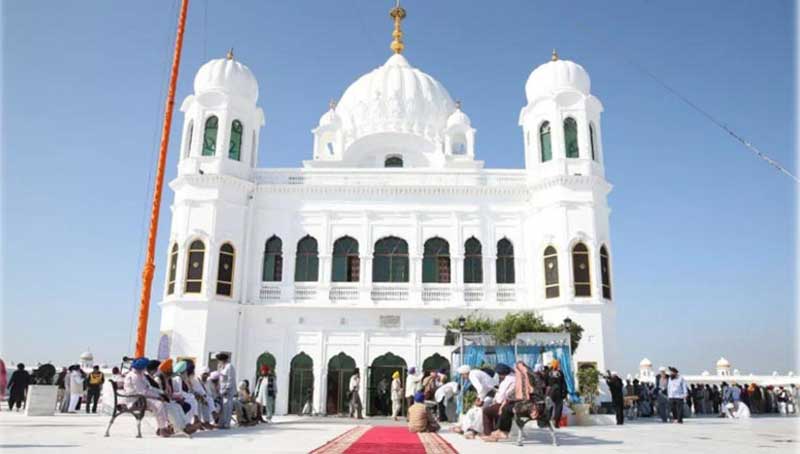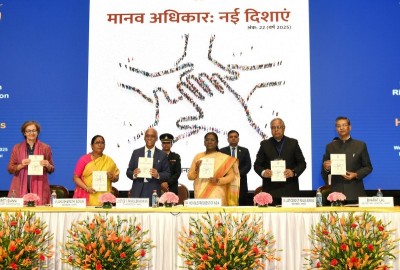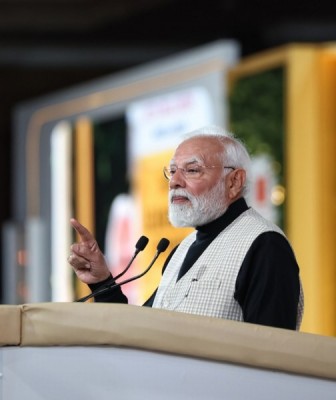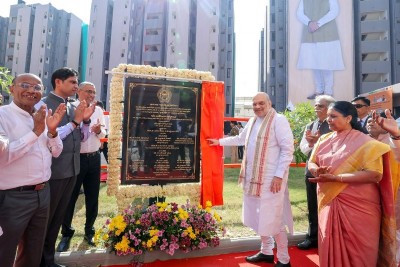 Kartarpur Sahib
Kartarpur Sahib
Kartarpur Sahib Corridor: A journey that transcends borders
There are very few places in the world that transcend beyond borders, where religions cease to exist, and where peace and tranquility envelop you like an infant in its mother’s warm, safe embrace. Gurudwara Sri Darbar Sahib or Kartarpur Sahib, located in Shakargarh, Narowal (Punjab, Pakistan), is one such place.
As devotees enter the premises of this holy shrine, the ‘Hindustani’ or ‘Pakistani’ in them is abated. What cocoons them is Pure, Divine Bliss. They become humans, naked of hatred, biases, and animosity. They become One with Him and in doing so they are blessed spiritually,
Guru Nanak Devji spent the last 18 years of his life in Kartarpur and departed for his heavenly abode from here on September 22, 1539. As a result, this Gurudwara is considered as the second most sacred shrine in Sikh religion. The original structure built by Nanak Devji was swept away in the Ravi floods on two occasions. The present shrine was rebuilt in 1925 by Raja Bhupinder Singh of Patiala who contributed Rs. 1,35,000 for its reconstruction. Not much is known about the original scriptures and objects belonging to the Gurudwara. However, British Viceroy Lord Canning’s wife, Charlotte Canning visited ‘Khurtarpore’ in February 1860. Apparently, she made some sketches of the Guru Granth Sahib and the structure that housed it, which she sent to Queen Victoria in her letters. These are still stored at Harewood House, West Yorkshire, England. There lies in the Gurudwara premises, a 20-foot well, which is 500 years old and is believed to have been built during the lifetime of the first Guru.
While living here Guru Nanak did farming for the rest of his life and gave the principles of ‘Kirat Karo, Naam Japo, and Vand Shako’. Guru Sahib also wrote several ‘Paaths’ here like ‘ASA DI WAR’ and ‘REHRAAS SAHIB’. It was here that Bhai Lehna became Guru Angad Devji by being blessed with ‘Gurdaddi’. The unique feature of this shrine is that Hindus and Muslim followers of Guru Nanak cremated him as per their individual religious customs and hence, both memorials exist next to each other.
According to Professor Puran Singh, a prominent Punjabi poet, and scientist, Guru Nanak “radiated love and faith and attracted people like light attracts moths” in Kartarpur. The community meal or ‘Guru ka Langar’ was initiated from here and has become an inseparable part of the Sikh Religion.
Kartarpur Sahib Gurudwara, like so many others, is not just a shrine. It is a sentiment. The British Indian partition, especially that of Punjab, led to the loss of shared religious, cultural, and spiritual heritage. “The political division of the Indian subcontinent in 1947 was, also in some measure, a spiritual division as the new states established complex systems of regulation to control the access of pilgrims from the two countries”, wrote Gurharpal Singh in ‘The control of Sacred Spaces’. In 1948, Shiromani Akal Takht demanded control and occupancy of both Nankana Sahib and Kartarpur Sahib, the birth and death places of Guru Nanak from Pakistan.
The issue has been a topic of discussion since 1969 when Indira Gandhi promised to approach Pakistan to acquire Kartarpur in exchange for land. Again in 1999, Indian PM, Atal Bihari Bajpayee and Nawaz Sharif talked about it during the former visit to Pakistan. By 2008, political tension and cross-border terrorism had mounted so much that PM Manmohan Singh and President Pranab Mukherjee could not execute the proposal for the corridor. Finally, in November 2019, during the Prime Ministership of Narendra Modi and Imran Khan, the Kartarpur Corridor became a reality and was opened for pilgrims from India just a few days before the 550th birthday of Guru Nanak Deviji.
The Corridor, known as the corridor of ‘international peace and harmony’, is a 4.5km long passage connecting ‘Dera Baba Nanak’ in India to Kartarpur Sahib Gurdwara in Pakistan. It is frequently hoped that this initiative will further the teachings of the Great Guru. Teachings of spreading love, unity, and brotherhood. This corridor holds a deep spiritual significance for Sikhs around the world as it symbolizes the eternal bond between Guru Nanak Devji and his followers, creating a sacred pathway for them to connect with his divine teachings.
As devotees set foot in the Gurudwara complex they not only embark on a transformative spiritual journey, but they also break away from the bondage of religion and religious fanatism to bow down before ‘Ik Onkar’. The corridor is indeed a physical as well as metaphorical bridge between India and Pakistan as it fosters peace and religious harmony. The atmosphere in the central courtyard of the Gurudwara complex is serene, devotees recite ‘Gurbani’ to the melodious and soothing sounds of traditional instruments. An ambiance of profound tranquility is thus created, immersing pilgrims in prayer and meditation.
What struck me most when I visited the Kartarpur corridor last year was the sublimity of the experience. It was as if pilgrims, just like Guru Nanak, removed their garbs stained with negativity and were walking in his footsteps towards a transformative experience of self-discovery, enveloped in a sense of serenity and spiritual abandon that lingers long after leaving the shrine. Here, constraints of being Hindu or Muslim, Indian or Pakistani just melt away as people from across the borders look at each other in awe and curiosity. Pilgrims from Pakistan visit the Gurudwara with as much reverence as Indian Sikhs. They are as obsessed with us as we are with them. They look the same as us, talk as we do, breathe the same air as us, and are hospitable as we consider ourselves to be.
The complex itself covers an area of around 42 acres, being touted as the largest in the world. Spotlessly clean, the courtyard is huge with a ‘Sarovar Sahib’(holy pond), ‘Darbar Sahib, ‘Dewan Sahib’(place where Guru Granth sahib is embodied and read out to congregations), ‘Langar Hall’(community kitchen), ‘Kheti Sahib’(place where Guru Nanak had his farms) and ‘Khoo Sahib’(heritage well) on the premises. Although there is a constant buzz of people from both countries, there is a general air of tranquility and divinity that surrounds the place. Apart from satiating their spiritual cravings, the pilgrims can also feast on Pakistani delicacies and shop for souvenirs.
To sum it all up, the world that exists in Gurudwara Kartarpur Sahib is an ideal world where devotees find solace, inspiration, and an intense connection with Guru Nanak Devji and his eternal teachings.
(Image and Credit: Khalsavox.com)
Support Our Journalism
We cannot do without you.. your contribution supports unbiased journalism
IBNS is not driven by any ism- not wokeism, not racism, not skewed secularism, not hyper right-wing or left liberal ideals, nor by any hardline religious beliefs or hyper nationalism. We want to serve you good old objective news, as they are. We do not judge or preach. We let people decide for themselves. We only try to present factual and well-sourced news.







